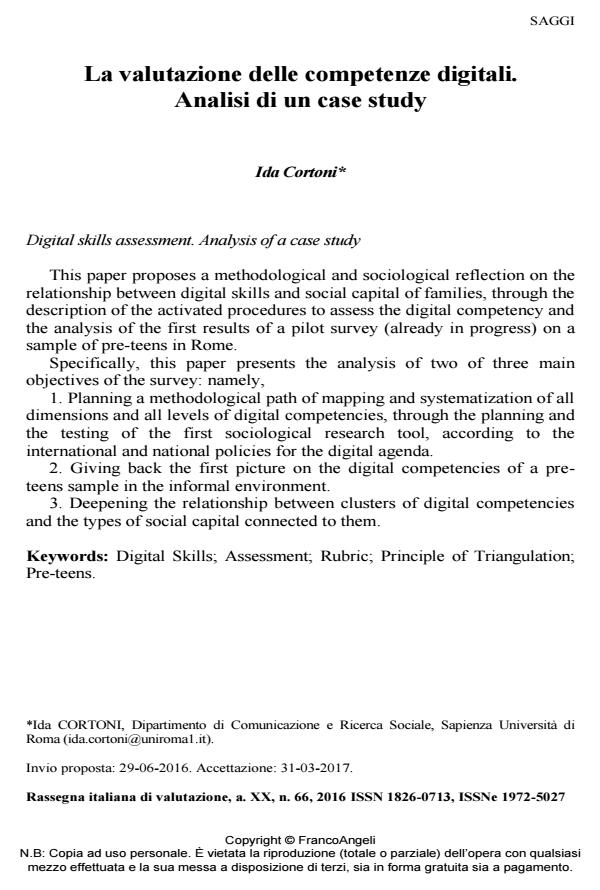Digital skills assessment. Analysis of a case study
Journal title RIV Rassegna Italiana di Valutazione
Author/s Ida Cortoni
Publishing Year 2017 Issue 2016/66
Language Italian Pages 22 P. 7-28 File size 689 KB
DOI 10.3280/RIV2016-066002
DOI is like a bar code for intellectual property: to have more infomation
click here
Below, you can see the article first page
If you want to buy this article in PDF format, you can do it, following the instructions to buy download credits

FrancoAngeli is member of Publishers International Linking Association, Inc (PILA), a not-for-profit association which run the CrossRef service enabling links to and from online scholarly content.
This paper proposes a methodological and sociological reflection on the relationship between digital skills and social capital of families, through the description of the activated procedures to assess the digital competency and the analysis of the first results of a pilot survey (already in progress) on a sample of pre-teens in Rome. Specifically, this paper presents the analysis of two of three main objectives of the survey: namely, 1. Planning a methodological path of mapping and systematization of all dimensions and all levels of digital competencies, through the planning and the testing of the first sociological research tool, according to the international and national policies for the digital agenda. 2. Giving back the first picture on the digital competencies of a preteens sample in the informal environment. 3. Deepening the relationship between clusters of digital competencies and the types of social capital connected to them.
Keywords: Digital Skills; Assessment; Rubric; Principle of Triangulation; Pre-teens.
Ida Cortoni, La valutazione delle competenze digitali. Analisi di un case study in "RIV Rassegna Italiana di Valutazione" 66/2016, pp 7-28, DOI: 10.3280/RIV2016-066002